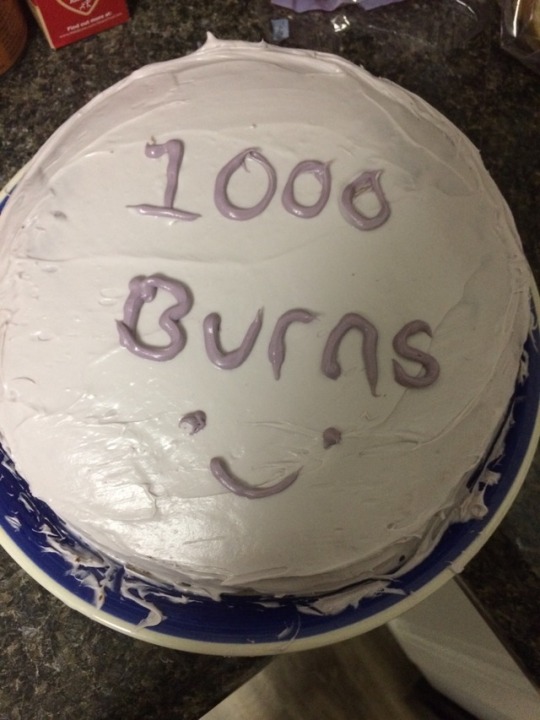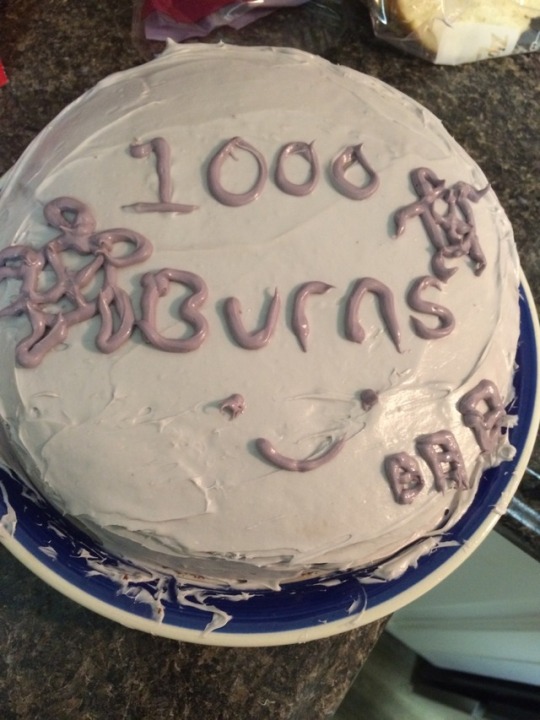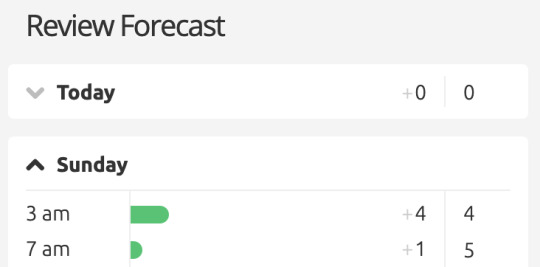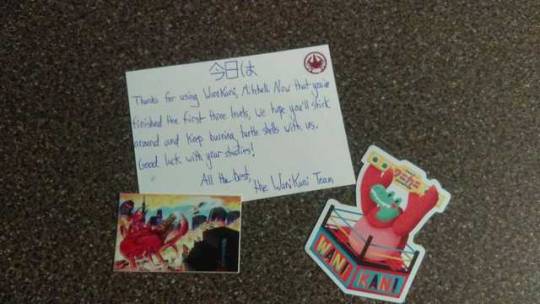#crabigator
Text


This was a bit ago but my slow ass burned 1000 different kanji, radicals, and vocabular on wanikani and I celebrated with purple cake.
The more decorated version was by my sis, who did her best to draw some turtles in icing.
The word I burned? 明日 ( ´ ▽ ` )
#wanikani#kanji#learning#motivation#reward#language#crabigator#japanese#明日#cake#purple#yum#1000burns
6 notes
·
View notes
Photo


“NÕ̖͡ S̻͢L̟͚̗E̺̝̮Ẹ̽P͇̘, ̰ͦ͌͢ͅȮ̫͓̓N̮͗LY̗̭ͨ̆ ̲̃K̻̆AN̡̺̹J̲͒Ị̡͙͉̓̆ͩ” the crabigator demmands
#studyblr#langblr#japanese#japanese langblr#wanikani#mine#to be clear. i am joking and do not condone staying up to study esp for fun#i saw this after staying up a little later than normal to do a review and crabigator.#crabigator humans have to sleep
2 notes
·
View notes
Text
WaniKani for Kanji Studies

WaniKani, for all your kanji learning needs~
WaniKani, the glorious, glorious site that’s been a permanent tab on my computer for years. Boy, where do I even begin to describe the wonder that is this kanji studying website and its community? Actually, other than the very basics I’ll probably stick to mentioning the things I personally love about it and let you explore the ins and outs of the page on your own, because the WK community site already has loads and loads of guides, support, and tips ‘n tricks for you if you want to give it a go and need someone to point you in the right direction. Oh, and then there’s also the official knowledge guide which includes FAQ, of course. Heaps of information on there. Totally recommend it. 🐊🦀✨

“Everything you need to know about waiting a really long time for your precious reviews”
“Okay, okay, we get it. But, what is WaniKani?” Ah. Right. Well, first things first, in Japanese ワニ (wani) means crocodile, or alligator, and カニ (kani) means crab. The mascot for the page is the almighty Crabigator that is more or less worshipped by the community. If you venture into the weird parts of it, that is. But if you’re not into that stuff you can just. Y’know. Forget everything I just wrote and pretend it doesn’t exist.
Through WK you get to memorise both kanji and vocabulary containing the kanji you learn. 2,000 kanji may sound like intimidatingly many squiggles and lines to learn, but nope! WK’s got your back! Instead of memorising each and every line, you learn using radicals. Suddenly you’ll look at a kanji and see three radicals instead of 10+ strokes. Magic ✨ You’ll also learn the different pronunciations/readings of the kanji, and when you learn new vocabulary you’ll have a bunch of example sentences of varying difficulty help you see the word in its proper context.

Kanji readings made easy. And fun!
The learning process is separated into different levels (60 in total), each containing a certain amount of radicals, kanji, and vocabulary. There is a “Lessons” button for learning new stuff, and a “Reviews” button for reviewing the stuff you’ve previously learnt. Easy peasy, right? 🍋
Welp, that’s essentially the gist of it. I’ll now introduce some of the things I love about WK real quick:
First few levels for free - this way you’ll get a feel for how WK works while at the same time learn some basic kanji. Then you’re free to choose which type of membership you’d like to purchase (if any). (It’s so worth it though, if you ask me)
SRS: spaced repetition system - to optimise learning based on how human memory works. Greatly appreciated by my psychology major brain
The design, art, layout - clean, colourful, pretty, simplistic, professional, and easy to use only begins to describe it! Besides, how could we possibly hope to learn anything at all if the page weren’t aesthetically pleasing, amirite
Humour - good god there’s nothing worse than really dry textbook material. How about some really dry humour instead? Believe me, there are some GEMS in the example sentences

Game-like - the level up system makes you want to keep going back for more so you can level up. It’s sort of like that TED-talk about the Super Mario Effect: you’re so engrossed in the “I want to level up!” mindset that you forget that you’re actually learning heaps of useful kanji in the process
Community - whether you want someone to answer your questions about those pesky particles, want to laugh at extremely disproportionate manga drawings people have found while reading, want to practice chatting in Japanese with fellow learners, want a morale boost by checking out some wholesome doodles and gifs, lowkey want to join a Crabigator cult or want to join a Japanese book club - the WK community is the place to go. I just wanted to learn some kanji, man. Who would’ve thought I’d make actual, solid friendships? Aw. Wholesome

And last but not least:
The Tofugu guys who run the show - accommodating, kind, funny, professional, and quick to reply if something’s up. You see them lurking around in the community posts sometimes. You should totally consider checking out their articles about Japan and Japanese learning over on their blog, Tofugu. Super helpful! Or their podcast about the same stuff. All good times over there. (One of my personal faves is probably the one about ようかい.) They’re also currently working on developing a Japanese-learning-online-textbook-type of thing (...nailed it) called EtoEto. Super excited for that!
And that’s that on that! 🎊 If you have any questions about WK just send me an ask or pop by the WK Community (my @ in case you want to say hi: Alolvovan). Happy kanji learning! 頑張って!

#:)#日本語#japan#japanese#langblr#japanese langblr#kanji#studyblr#wanikani#tofugu#pod#podcast#blog#study blog#study motivation#language#studying
187 notes
·
View notes
Text
I know it’s popular to characterize the Duolingo owl as this evil horror movie creature who will hunt you down to make you practice your target language but honestly to me the real MVP in my life is the Wanikani Crabigator dude. He wont hunt you down like Based Duolingle but to me Wanikani successfully captures the parent who wont be mad, just disappointed. The sternness of it. Papa Wanikani said Japanese is happening with or without you and you can bet your ass you will make up every single piece of work you miss. You wanna fuck around? Fine. Twice the work tomorrow. I opened Wanikani up in Tsurukame today and did like 30 reviews or something and it was like “Oh you think you’re done? See you in six minutes for your next review” and I just have to be like “okay, sorry sir.” He doesn’t need to be the Duolingo owl. He doesn’t need to hunt me down in my home. I don’t need any external punishment. If I don’t do my lessons I’m in for a world of pain that I created myself.
1 note
·
View note
Text
JLPT N2. It’s a monster. A huge gap from N3 stands in the way, with only the rickety bridge of my study habits to cross the gorge. Right now, all schools in Japan are shut down due to the ongoing pandemic. Which is not something I thought I would ever say. Anyway, for reasons mysterious to me, teachers are still being told to go to work. So I’ve been spending a LOT of time at my desk lately. Which means I have plenty of time to study! (cue internal screaming)
Me, upon realizing how much study time I have now
So now I’m going to procrastinate on studying for N2 by writing about studying for N2. Here are some study techniques and materials I’m using in my quest to become 上手af.
Vocab
Resources: Anki, Tanos N2 vocab list
One day, I was flicking through TV channels and found the Japanese version of Are You Smarter than a 5th Grader? on. When the guy won, one of the kids asked him how he knew so much. The guy said that one of the things he did was study 5 new words everyday, so that each year he learned 1,825 words. I thought this was a fantastic idea and decided to do it myself. I found a vocab list from Tanos to work with. Every week, I write down that week’s words in my journal. This helps me to keep track of where I am in the massive list. Then, everyday I add the 5 words into an Anki deck and cumulatively study all the vocab I’ve entered in so far.
Blocking out my 5 words a day in my journal
If you’ve never used Anki as a study tool before, you absolutely should. Basically, Anki is a program that uses a SRS algorithm. SRS (spaced repetition study) is a study technique that spaces out reviews of materials based on how well you know them. For example, if I mark a vocab word as “easy” it may come up to be reviewed 3 days from now, whereas if I mark a word as “hard” I’ll have to review it tomorrow. The cards are very easy to set up, so you can use them for basically any kind of study. Go to AnkiWeb to make an account and get started. There’s also a free app, AnkiDroid, available on Android devices.
I also have a separate Anki vocab deck where I add words I come across in reading practice, or my daily life. This deck is non-JLPT focused, but helps me to keep adding more and more vocab to my repertoire. Plus, it’s always nice to learn vocab that I know is being used around me. And helps me read. Because I’m really bad at reading.
Kanji
Resources: Wanikani
I pretty much exclusively use Wanikani to study kanji. However, this method is very slow and steady wins the race style. Wanikani will start you on verrrrry basic kanji. Since I’ve been using it already since college, I’m at levels that challenge me. This is not something that you can jump into and will be at your level. Still, I highly recommend it. I’ve definitely noticed my kanji recognition ability improve when I’m serious about using Wanikani. It can also help with vocab!
What I like about Wanikani is that it forces you to be able to input both the Japanese readings and the English definitions. This really helps your ability to translate bilaterally and quickly recognize, read, and define the kanji. However, once you get into upper levels, the daily reviews can really pile on and it can get overwhelming. My best suggestion is really try to stay on top of your daily reviews, but also exercise judicious use of the vacation mode feature. If you’re overwhelmed by the amount of reviews, you’ll be less likely to continue to study. Just do your best, and pause things when you need to. All hail the Crabigator!
Reading
Resources: Nihongo So-matome reading book, Japanese.io, personal books
I’m not gonna lie, I’m bad at reading. It takes me a long time to read, and it’s exhausting. Part of this (a large part) is because I’m even worse at grammar, and part of it is just a frustrating lack of vocabulary.
The first resource I use is the Nihongo So-matome textbook series. They separate their books into sets. The reading book has passages to read, then comprehension questions following the reading. The readings are usually brief, but cover a variety of categories – like ads, fliers, and newspaper articles.
The next resource is one that I just found, and am still getting familiar with. Japanese.io is an online reader and chrome extension. The online reader has passages and entire books in Japanese. By clicking on words, you can read their definitions and ad them to words lists. Clicking on grammar items will give you explanations of those structures. The passages are also divided into JLPT levels, so you can select things based on your level. By using the “Feed” feature, you can also look at reading from Japanese news. You an even select your category of interest for what you want to read. Like I said, I haven’t used this site a lot yet, so I’m still learning how to use it. From what I can tell, the program is very well designed and easy to use, and looks like it will be a very valuable tool.
Finally, I occasionally go looking for real books (not structured textbooks) to try to read. I went to the Sumida Hokusai Museum a while ago and picked up a manga biography of Hokusai. I’m working through that now by adding sticky notes to pages with words I don’t know, and adding those words to my vocab Anki deck. Although this is just a kids book, I think it’s valuable to practice reading something not designed for study use. Plus, it gives me a break from the mindset of studying because I enjoy the topic and the art.
Grammar
Resources: Nihongo So-matome grammar book, japanesetest4you, bunpro.jp
God I hate grammar. I hate grammar so much. I really, truly do. But unfortunately to pass N2 and also to not sound like a cavewoman and/or small child, I need to use more complex grammar structures than “This is a sandwich. The weather is miserably humid. I do not like natto.” Sigh.
Ok, so first I have the Nihongo So-matome grammar series book. This is designed to be used everyday and introduces around 4 grammar structures a day. At the end of the week, there will be a mock test page with questions simulating those seen on the JLPT. Each day also comes with a small set of review and test questions. This series is great for giving you a structured way to introduce and study new grammar, and provides great sample sentences and diagrams for how to conjugate. what it’s a bit weak on, is English explanations of what the grammar item means. So, I highly suggest using this book together with japanesetest4you.com. I find that japanesetest4you does tend to have needlessly complicated sample sentences, but useful explanations. So use these two resources together!
I also write down all the grammar items introduced in the textbook, along with sample sentences, and add them to an Anki deck to study. This way, I have a physical copy of all the grammar I should be studying that I can add notes to, and a virtual Anki deck to study from.
The scribblings of a person slowly going insane
Bunpro.jp is a subscription based SRS grammar study site. It has tons of grammar items divided up per JLPT level. Each grammar item has an English explanation, conjugation guide, sample sentences, and linked readings that may help you understand it better. Once the item is added to your reviews, it will come up in your study. When studying, you are presented with a sentence that has something missing. You have to fill in the correct grammar, with correct conjugation. This is HARD. It can sometimes be very frustrating, just for the conjugation bit. But it is very helpful to be forced to input the grammar yourself, instead of selecting from a multiple choice. This makes sure you really know what the grammar is. If you don’t understand what the question is asking for, you can ask for a hint. There are 3 levels of hints, each giving more and more information away.
You can also input your Wanikani API key so that you are only shown furigana for kanji that you shouldn’t know yet. If you’re struggling, you can always click on a word to be shown the furigana. You can also either hide or show English in sample sentences to push you to read in Japanese. I’m not going to lie, using bunpro can be pretty mentally exhausting. It’s a struggle. But it is very valuable practice and really pushes you on your knowledge of the grammar.
Now….to study
That’s about all I’ve got for now. Yes, I know I should be practicing more listening and taking practice exams (check japanesetest4you or JLPTSensei for free practice tests) but there’s only so much studying I can do in one day before my brain fries. My best advice if you’re looking down the barrel of a lot of free time (oh hey quarantines) is don’t do long periods of study. Take it in manageable blocks a few times per day. Trying to do everything at once and pushing yourself for hours will just make you less likely to be able to recall what you worked on. Take 30 minutes to practice reading, then go do something and come back to clear out your Wanikani reviews. Don’t. Panic. This is a message for me just as much as anyone else reading this. Don’t panic, and don’t torture yourself. Study, but also live your life. And remember most of all, that you and your worth are not defined by test scores.
Now, as learning through osmosis and/or telepathy doesn’t seem to be working, I should stop procrastinating by thinking about studying and actually go study.
Pls Luna….put the 日本語 in my tiny human brain
How I’m Studying for JLPT N2 JLPT N2. It's a monster. A huge gap from N3 stands in the way, with only the rickety bridge of my study habits to cross the gorge.
#anki#ankidroid#bunpro.jp#japanese#japanese grammar#japanese language#japanese study#japanese vocabulary#japanese.io#japanesetest4you#japanesetest4you.com#jlpt#jlpt n2#jlpt study#kanji study#learn japanese#nihongo so-matome#Study#wanikani
1 note
·
View note
Text
everyone talks about the duolingo owls strict language regiment but no one mentions the crabigator
#mfw i go from 60 lessons to almost 100 wanikani loves to work me#fortunately i happen to have 1 nerd trait which is enjoyment of studying SO i do not suffer from this#low pitched finite woofing
1 note
·
View note
Photo

The kanji learning app I'm using sent me this in the mail and honestly????? This is so sweet?????? S/o to the team at WaniKani
0 notes
Link
Gilet raglan pour poupon Corolle - Raglan cardigan for Corolle Baby Doll (tuto) - Crabig et Brinig
0 notes
Conversation
my friend, who was really depressed about someone buying him Crabgot: cut my life into crabgot
friend: this is my crab resort
friend: crabigation
friend: no crabbing
friend: don't give a fuck if I cut my claw crabbing
2 notes
·
View notes
Text
Duolingo owl vs WaniKani crabigator final battle for my soul
0 notes
Photo

I made it to WaniKani level 2! Woohoo! It’s starting to overwhelm me just a little, and I have gotten confused a couple times (it’s “to hang”, not “to lower,” self, get your act together DX)
Fully intend to get the lifetime membership once I pass level 3. So worth it
I love you crabigator <3
#wanikani#tofugu#it helps that I know some of the easier kanji already#but I only know their meaning#not necessarily the pronunciation
0 notes
Link
Gilet raglan pour poupon Corolle - Raglan cardigan for Corolle Baby Doll (tuto) - Crabig et Brinig
0 notes